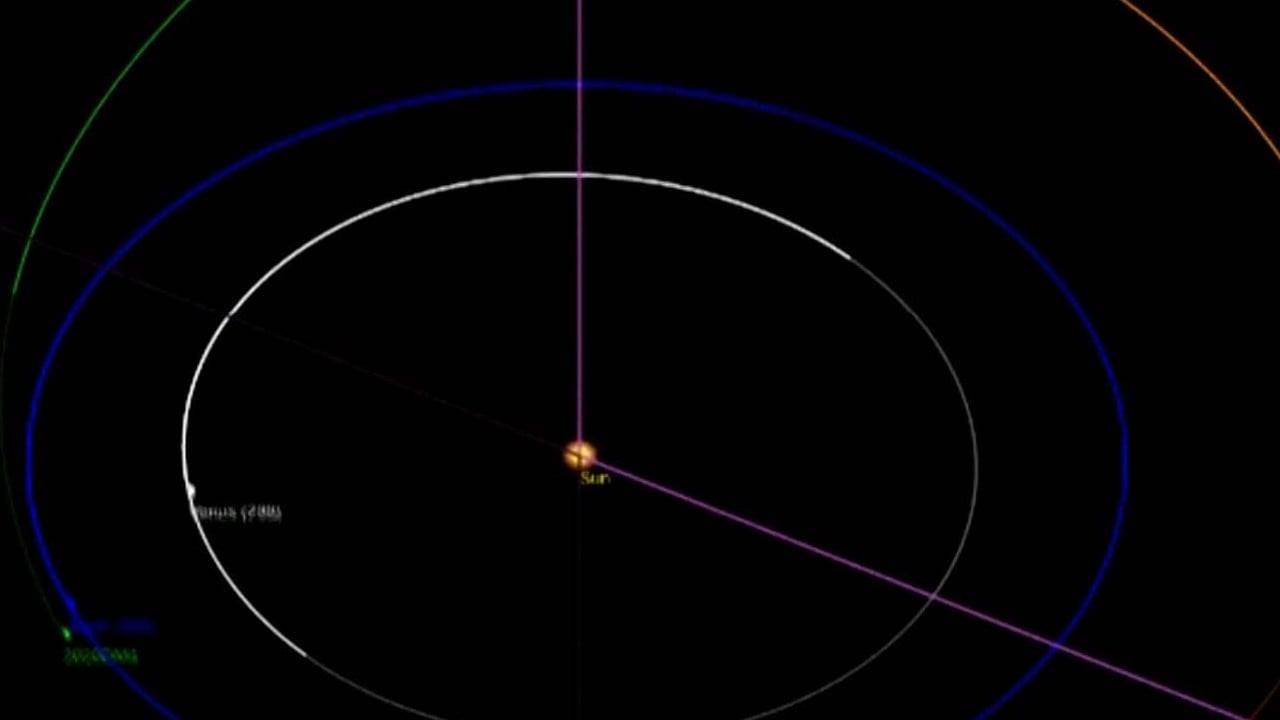
Chinese smart satellite tracks US aircraft carrier in real time, researchers say
- AI-powered eye in the sky could identify a wide range of tactical or strategic targets, developers say
- Previously, a huge amount of raw satellite data had to be analysed on the ground
When USS Harry S. Truman was heading to a strait transit drill off the coast of Long Island in New York on June 17 last year, a Chinese remote sensing satellite powered by the latest artificial intelligence technology automatically detected the Nimitz-class aircraft carrier and alerted Beijing with the precise coordinates, according to a new study by Chinese space scientists.
The live-fire exercise that day involved a joint action of seven warships and many planes to simulate a fight against a powerful enemy while passing a narrow passage of water.
The fleet tested numerous tactics such as changing formation and making emergency manoeuvres to deter enemy submarines and other threats, according to the US Navy.
In the past, the Chinese military had to collect and analyse a huge amount of raw satellite data on the ground to get a clue on the details of such drills taking place in the US home waters, and the results usually came after the event was over.
But with AI-powered satellites, Beijing could detect and “live stream” military activities or assets of interest on the other side of the planet, according to space scientist Yang Fang and her colleagues with DFH Satellite in Beijing in a paper published in domestic peer-reviewed journal Spacecraft Engineering last month.
The satellite that caught the US aircraft carrier in the act was so smart, it could identify a wide range of tactical or strategic targets by analysing more than 200 frames of high-definition images per second, a speed that some ground-based computers would struggle to achieve, according to the Chinese team.
Putting AI into space involved many challenges, according to a Beijing-based satellite imaging researcher who was informed about the study but requested not to be named due to the sensitivity of the technology.
The mainstream AI algorithms required extensive training based on a huge amount of data, but the calculation resources in the orbit were rather limited, he said.
Satellite computers usually trail far behind their counterparts on the ground in processing speed due to weight, space and power constraints.
China’s military warns US could dominate space with Starlink satellite network
And they have to work for years without a glitch in a harsh environment. Most chips designed to handle AI tasks would fail quickly under strong radiation, according to the researcher.
Yang’s team said that they had achieved a breakthrough on “weight reduction” for AI technology. The image recognition with the algorithm they developed for the satellite consumed just 3 per cent of the calculation resources used by traditional algorithms when doing the same task, according to their paper.
They also made a new family of AI chipsets that could do many different types of jobs simultaneously on board the satellite.
If one chip failed, another would serve as backup and immediately take over the job to ensure the continuous functioning of the satellite.
There were some clouds over the New York region during the USS Harry S. Truman strike group exercise.
The Chinese satellite identified the aircraft carrier in the gaps of clouds with a sharp image containing so much detail that it almost ruled out the possibility of a mistake, according to Yang’s team.
In another test to verify the performance of space-based AI, the same satellite automatically detected and obtained the coordinates of military aircraft, naval ships and strategic assets such as oil storage tanks in northeastern Australia.
The researchers did not name the satellite reported in their paper. Yang could not be reached for comment.
Several small satellites launched by Chinese universities, government institutes and private companies in recent years have employed AI to improve China’s response to events happening around the world, according to openly available information.
China will boost Russia ties in military tech and energy, top envoy says
Yang and her colleagues said the smart satellite could increase the communication efficiency with home by a million times because the AI would remove most of the junk information that jammed the communication channels.
China also has a plan to bring AI to its older remote sensing satellites, according to researchers involved in StarNet, an global internet satellite project launched by the Chinese government last year.
StarNet will only have about 400 satellites, many fewer than the US’ Starlink and OneWeb networks.
But some of these Chinese communication satellites would carry AI processors to boost their performance.
These smart communication satellites could receive and analyse raw data from traditional remote sensing satellites, identify targets of interest, and then pass the information to end users at home with little time delay, the project’s scientists said in a paper published in domestic peer-reviewed journal Telecommunications Science last month.
But a major concern to the space community was the “black box” problem, that humans did not fully understand how the AI learned and thought, they said.


